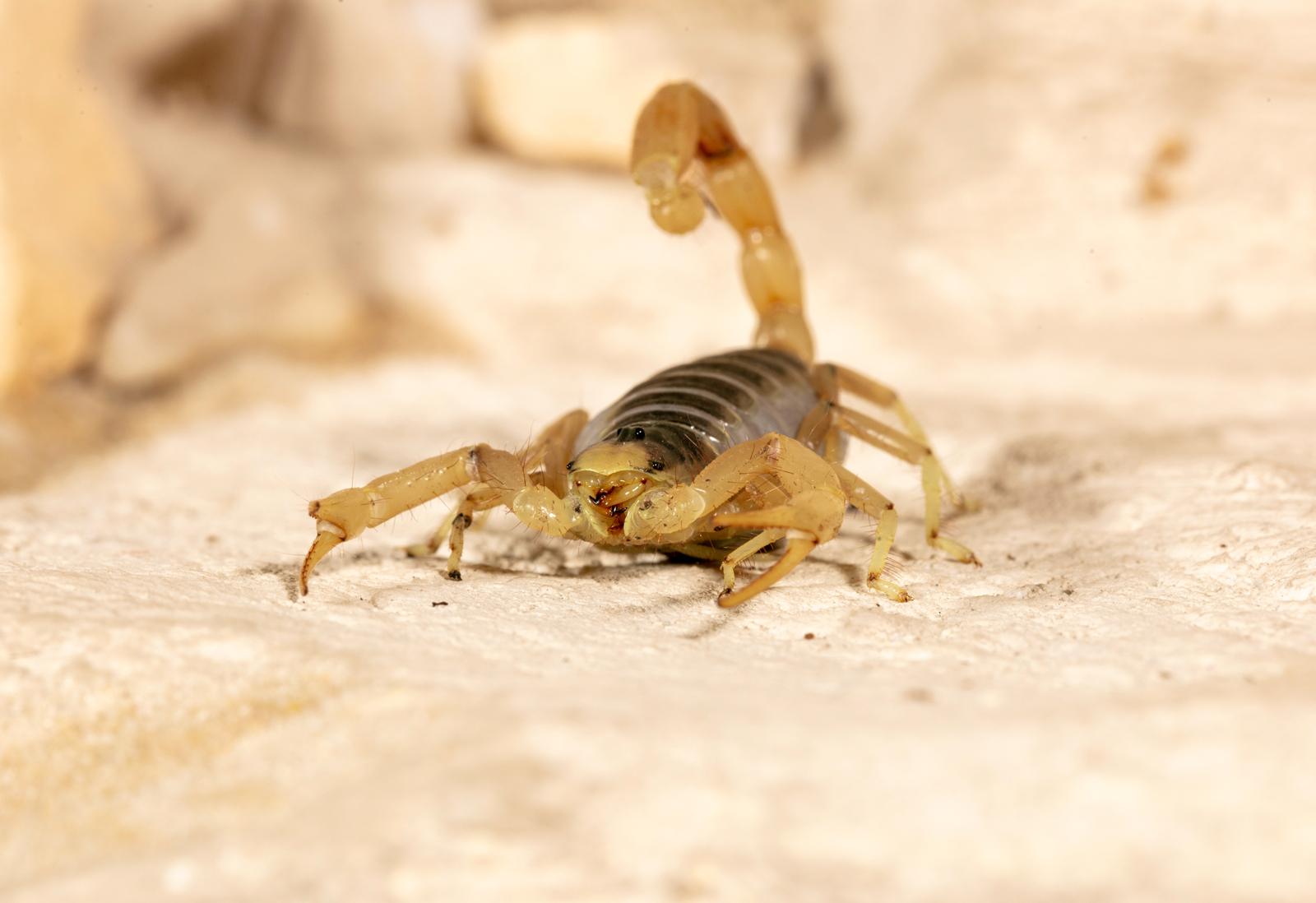Desert living provides breathtaking landscapes and warm evenings, but it also presents challenges that many homeowners face, including scorpion activity. These resilient pests are well adapted to arid conditions and often find their way indoors in search of cooler environments and moisture. Because they can squeeze through extremely small gaps, preventing their entry requires a focused strategy. Effective scorpion control begins with securing a home’s vulnerable points while also managing the factors that draw them near.
 Why Desert Homes Are Vulnerable to Scorpions
Why Desert Homes Are Vulnerable to Scorpions
Scorpions are common in desert regions, thriving in rocky areas, sandy soils, and even residential neighborhoods where they can find shelter. The design of desert homes, often built with stucco walls, tile roofing, and landscaped yards with stones or cacti, provides natural hiding spots. Warm nighttime temperatures encourage them to become active, and they follow utility lines, pipes, or cracks straight indoors.
The challenge lies in their physical abilities. Scorpions can flatten their bodies to slip through gaps no thicker than a credit card. They are also nocturnal, meaning they often go unnoticed until activity increases significantly. Homeowners must therefore pay close attention to potential entryways and maintain vigilance year-round. Understanding their behavior also requires recognizing their patterns, such as those outlined in resources about the lifecycle of scorpions.
Key Entry Points Scorpions Commonly Use
Scorpions take advantage of weak points in construction and maintenance. Identifying these areas is crucial for keeping them outside.
- Foundation cracks: Even hairline gaps allow access to wall voids and basements.
- Door and window frames: Worn weather stripping or loose seals are prime pathways.
- Vents and utility lines: Openings for air, gas, or plumbing provide hidden entry.
- Rooflines and eaves: Scorpions climb walls and enter through unsealed gaps under tiles.
- Garage doors: Spaces beneath doors often remain unprotected, making garages a common entry point.
Each of these vulnerabilities requires careful inspection. When multiple areas remain unaddressed, scorpions can establish a recurring pattern of intrusion that simple cleaning or surface treatments cannot stop.
Practical Steps to Scorpion-Proof a Home
Preventing scorpion entry begins with sealing and strengthening the home’s outer defenses. The following measures reduce opportunities for scorpions to gain access:
- Seal cracks and crevices: Use durable caulking or weather-resistant sealants on foundations, siding, and rooflines.
- Upgrade door sweeps: Install tightly fitting sweeps on all exterior doors, including garage entrances.
- Maintain screens: Repair tears in window and vent screens to block hidden access points.
- Apply weather stripping: Replace worn seals around windows and doors for a snug fit.
- Inspect plumbing and utility lines: Ensure all gaps where pipes or cables enter the home are fully sealed.
Taking these steps not only improves scorpion control but also reduces the entry of other pests such as ants, cockroaches, and spiders that thrive in desert environments. Over time, this comprehensive approach helps maintain a safer living space.
Supporting Measures That Limit Attraction
While sealing a home is critical, reducing outdoor conditions that attract scorpions is equally important. Homes surrounded by inviting habitats increase the likelihood of infestations.
- Control moisture: Repair irrigation leaks and ensure outdoor faucets do not create damp soil.
- Clear clutter: Remove yard debris, stacked firewood, and unused construction materials where scorpions hide.
- Trim vegetation: Keep bushes and tree branches away from exterior walls to limit pathways indoors.
- Improve lighting: Use yellow or sodium vapor lights outdoors, which attract fewer insects and, in turn, fewer scorpions.
- Monitor regularly: Conduct seasonal inspections to detect activity before it becomes severe.
These practices not only minimize scorpion attraction but also contribute to broader pest management. Many desert homeowners prefer environmentally conscious strategies, making eco-friendly solutions an appealing complement to structural defenses.
Why Professional Scorpion Control Delivers the Best Results
Despite strong prevention efforts, scorpions can still find ways inside. Once they establish themselves, eliminating them becomes far more challenging. Professionals bring expertise, specialized equipment, and targeted treatments that go beyond sealing cracks. They also understand the behavior of desert-dwelling pests and can identify subtle vulnerabilities that homeowners may overlook.
In addition, scorpions often coexist with other pest populations that serve as their food source. Effective scorpion control, therefore, requires addressing the entire pest environment. Professional inspection ensures that insects like ants and cockroaches are managed simultaneously, reducing the conditions that keep scorpions active around homes. This integrated approach provides long-term relief rather than temporary fixes.
Secure Your Desert Home with Confidence
Keeping scorpions out of desert homes requires more than routine maintenance. By sealing entry points, reducing attractants, and relying on expert guidance, homeowners can significantly lower risks. For solutions designed to protect your home year-round, contact Panda Pest Control and enjoy peace of mind knowing your property is protected.


